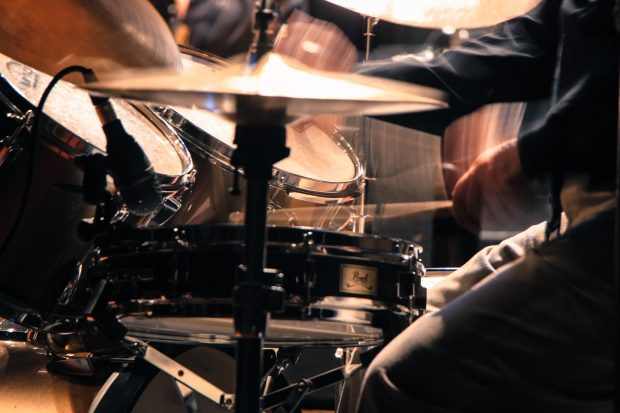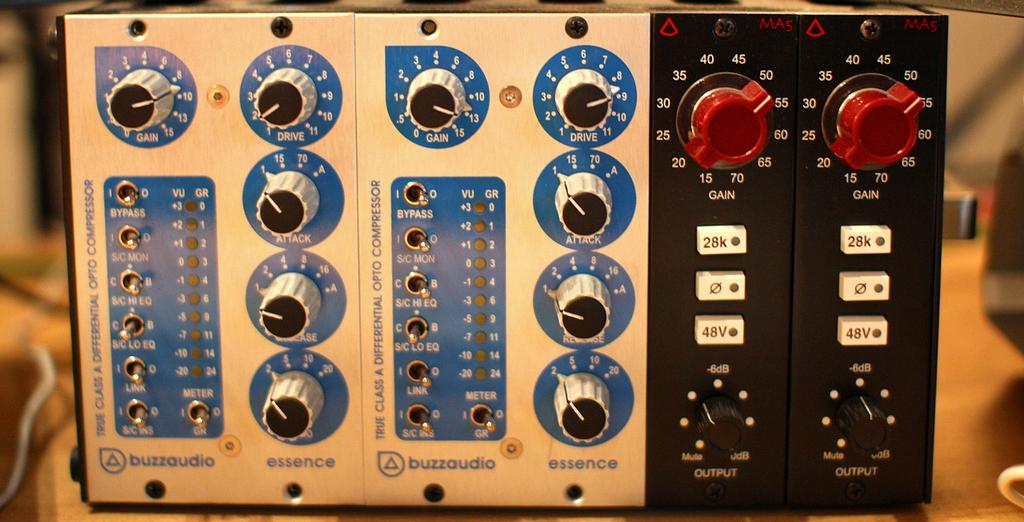Whilst we cover compression quite often in this blog, my opinion is that you can never know enough about it. It’s an incredibly useful and undervalued tool. So, for today’s article, I’d like to talk about parallel compression. Sometimes known as New York compression, this technique utilizes upward compression to create power. Learning to use it appropriately could be just the thing you were looking for.
A quick bit of science
Parallel compression takes advantage of the way in which the human ear processes dynamics. If you’ve ever been to a concert before, I’m sure you’ve noticed your ears ringing once you’ve got home. This is because the human ear is very sensitive to sudden drops in loudness. However, when it comes to the opposite, this isn’t as true. Sudden increases in loudness can be handled much better, as our ears are designed to anticipate this in order to protect themselves. Taking this into consideration, we can use upward compression to inject sudden and powerful transients without making the song unpleasant to listen to.
So what is upward compression?
Typically, when we compress an audio signal we are aiming to bring the highest peaks down to reduce dynamic range. For the sake of explanation, we will refer to this as downward compression. Upward compression, as you may have guessed, is the act of bringing the quietest sounds in our signal up to reduce dynamic range. For all intents and purposes, the result of these two techniques appears the same. However, upward compression allows us to bring out the details in our mix. It lets us accent and focus on the quieter natural ambience in our recordings and adds warmth and character. These are all elements that lend themselves to a better mix. Also, instead of squashing our entire signal down, we are now squashing our signal upwards. As we all now know, our ears like this much more!
So how does this apply to parallel compression?
Parallel compression is the act of combining a heavily compressed version of a signal with the original, dry (or sometimes lightly compressed) version of the same signal. In essence, we are blending two similar signals to create one much larger signal. The heavily compressed track contributes punch and aggression to the mix whilst the dry signal allows us to keep our original tone which is full of dynamic. Now, you not only hear all your lovely transients, but they are that much more powerful as well. Typically, we will aim to use VCA or FET style compressors when enacting this technique. Their fast, aggressive nature lends itself to what parallel compression aims to achieve.
So when should I use parallel compression?
 Parallel compression appears most commonly on buses. It’s truly fantastic at adding power to a drum mix, especially when you’re having a hard time getting the kick and snare to really cut through the mix. Chances are when you hear most big rock songs, you’ve heard some parallel compression. It’s also very common within hip-hop as well as electronic music. However, this isn’t to say it doesn’t have its place within other genres.
Parallel compression appears most commonly on buses. It’s truly fantastic at adding power to a drum mix, especially when you’re having a hard time getting the kick and snare to really cut through the mix. Chances are when you hear most big rock songs, you’ve heard some parallel compression. It’s also very common within hip-hop as well as electronic music. However, this isn’t to say it doesn’t have its place within other genres.
You can also use parallel compression as a way to beef up an entire mix. A lot of VST based compressors have internal parallel compression options these days (such as Native Instruments VC160), making them easier to use when applying parallel compression to an entire mix. By cranking the compressor and adjusting the attack and release times until we start to hear the track pump, we can add a level of power and presence that loudness alone simply won’t give you. Not only this, but it can add real character to dynamic variations without squeezing the life out of them.
Another less common approach (but a personal favourite of mine) is parallel compression on room microphones. If you think back to what I mentioned about how upward compression can bring out the subtle ambience of a recording as well as providing power, it makes perfect sense. Our room mic recordings are there to add depth to the sound as well as filing up empty space. By utilising parallel compression, we can not only introduce this ambience, but we can accent it and make it one of the driving forces within the song.
TL;DR
Parallel compression is the act of combining a dry signal and a compressed signal to create one powerful sound. We can use it on single tracks, buses or even entire mixes as long as it is appropriate. This style of upward compression is more pleasant on the ear than aggressive downward compression and tends to increase power and loudness. More importantly, we do not sacrifice as much dynamic range using this technique. My advice, grab an old mix that you always wanted a little more power out of and give it a try. You’ll be pleasantly surprised.
Feature image under creative commons attribution 2.0 generic license by Franz Schuier.
Sobre el autor

Tim Dunphy
Ingeniero de sonido y redactor de contenidos especializadosMás de 10 años de experiencia trabajando en el sector del audio. De todo, desde enrollar XLR hasta masterizar álbumes. Soy un hombre hecho a sí mismo y mantengo mis activos en Bitcoin. ¿Qué más hay que saber?
Deja un comentario
Entrar para comentar



